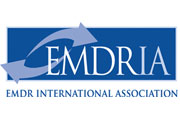
What is EMDR?
EMDR is an evidence-based psychotherapy for Posttraumatic Stress Disorder (PTSD). In addition, successful outcomes are well-documented in the literature for EMDR treatment of other psychiatric disorders, mental health problems, and somatic symptoms. The model on which EMDR is based, Adaptive Information Processing (AIP), posits that much of psychopathology is due to the maladaptive encoding of and/or incomplete processing of traumatic or disturbing adverse life experiences. This impairs the client’s ability to integrate these experiences in an adaptive manner. The eight-phase, three-pronged process of EMDR facilitates the resumption of normal information processing and integration.

Why learn EMDR?
This treatment approach, which targets past experience, current triggers, and future potential challenges, results in the alleviation of presenting symptoms, a decrease or elimination of distress from the disturbing memory, improved view of the self, relief from bodily disturbance, and resolution of present and future anticipated triggers.

How to learn EMDR?
Basic Training in EMDR therapy is designed to allow the participants to learn theory and concepts, and transfer that knowledge into practice. There are 40 hours of training and 10 hours of case consultation.
It is important to attend trainings approved by the EMDR International Association, as these programs are peer reviewed to meet current standards of excellence.
Eye Movement Desensitization and Reprocessing (EMDR) is a psychotherapy treatment that was originally designed to alleviate the distress associated with traumatic memories.





